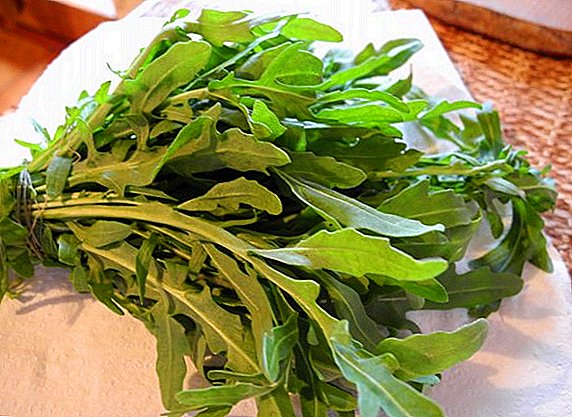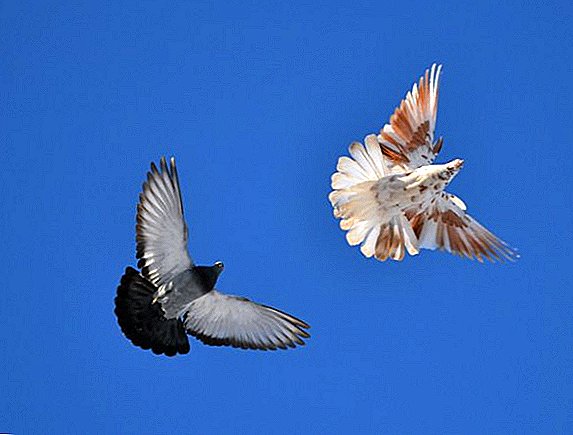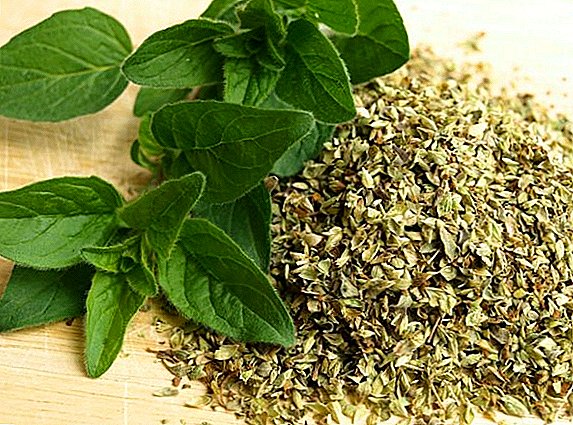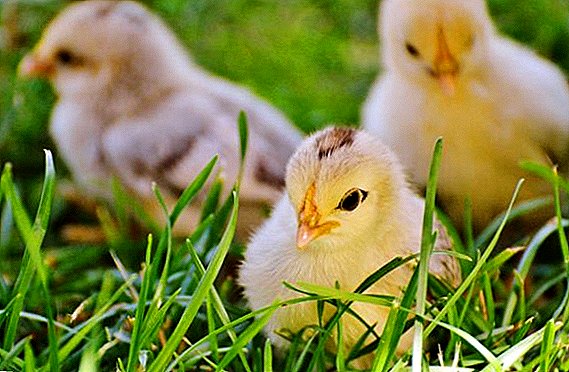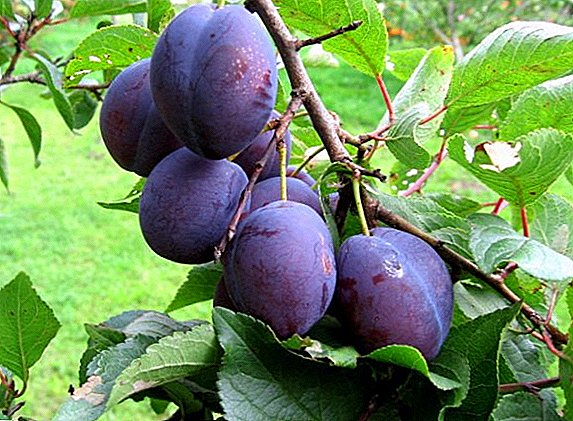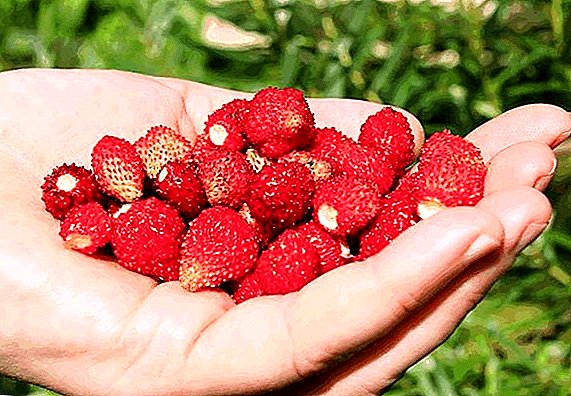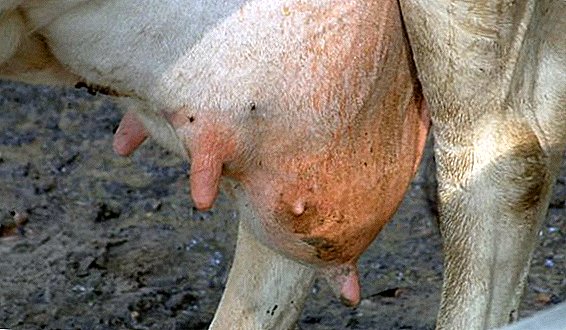 Diseases of cows cause not only a decrease in productivity, but also the production of poor-quality milk that is dangerous to the health of consumers, especially as regards udder diseases. Most of the diseases of this organ are pathologies resulting from improper animal care or injury. Usually they are not contagious, but need timely treatment. We will talk about the features of such diseases, their treatment and prevention in the article.
Diseases of cows cause not only a decrease in productivity, but also the production of poor-quality milk that is dangerous to the health of consumers, especially as regards udder diseases. Most of the diseases of this organ are pathologies resulting from improper animal care or injury. Usually they are not contagious, but need timely treatment. We will talk about the features of such diseases, their treatment and prevention in the article.
Causes of Udder Diseases in a Cow
Among the main causes of udder disease are the following:
- keeping a cow in a damp or cold room;
- dirty litter;
- unsanitary conditions in the barn;
- injuries;
- poor hygiene during milking;
- wrong start of cows after calving;
- poor udder care.

Diseases of the udder in cows: symptoms and treatment
Udder diseases can be divided into several groups:
- having a viral nature - smallpox, warts;
- caused by injuries - insect bites, tightness, milk incontinence, cracks and bruises;
- inflammatory processes of various etiologies - mastitis, edema, furunculosis.
Mastitis
Mastitis is an inflammation of the mammary gland caused by infection, loss of tissue integrity, milk stagnation in the udder, and other causes. The most susceptible to the disease are weak animals with malnutrition or poor-quality care. During pregnancy and after calving, the cow is most susceptible to pathogens. There are 6 forms of mastitis, which can go one into another.  Causes of mastitis in cows Symptoms of mastitis:
Causes of mastitis in cows Symptoms of mastitis:
- udder edematous, reddened, painful;
- palpation of the organ can be felt seals;
- part of the udder seems hot to the touch;
- cow temperature may rise;
- milk yield and fat content are reduced;
- watery milk, with cottage cheese clots, bitter taste;
- possible purulent discharge from the udder.
Read more about the types of mastitis and the features of the treatment of this disease in cows.
When a disease is detected, the cow is transferred to food with dry feed and milked 4-5 times a day. If mastitis is not treated, then as the disease progresses, it becomes a chronic stage, suppuration begins, and the cow may die due to purulent infection.  With mastitis, the affected area of the udder looks puffy and reddened. Treatment of mastitis: the cow must have warm soft bedding and good nutrition. Drug treatment includes a course of penicillin antibiotics for 5-7 days. Udder must be washed well, after each milk massage is done. As an external remedy, ichthyol ointment is rubbed into the inflamed areas after each milking.
With mastitis, the affected area of the udder looks puffy and reddened. Treatment of mastitis: the cow must have warm soft bedding and good nutrition. Drug treatment includes a course of penicillin antibiotics for 5-7 days. Udder must be washed well, after each milk massage is done. As an external remedy, ichthyol ointment is rubbed into the inflamed areas after each milking.
Did you know? The smallest Manikyam cow lives in India. She is 61 cm tall. An ordinary cow is about 150 cm tall.
Smallpox
Smallpox is one of the most infectious infectious diseases. The disease has a viral nature and is transmitted by airborne droplets, as well as through contact with another patient or household items. Manifested in the form of specific markings on the skin.
Symptoms:
- general intoxication of the body;
- high temperature;
- there are rashes on the skin, forming pustules and subsequently specific scars;
- animal apathetic.
 Due to the high contagiousness of the disease, the cow needs to be isolated from other animals and when taking care of it carefully observe the precautionary measures in order not to spread the disease.
Due to the high contagiousness of the disease, the cow needs to be isolated from other animals and when taking care of it carefully observe the precautionary measures in order not to spread the disease.
Treatment: drug therapy necessarily contains a course of antibiotics. To properly appoint it, the doctor conducts a study of microflora. Most often it is "Nitoks" or "Bitsillin 5". Injections are performed intramuscularly. Every 2-3 hours a cow needs to be given. Udder is treated with Chlorhexidine antiseptic and wound healing ointments. In the diet should be easily digestible food and vitamins.
Did you know? It is believed that the smallpox virus is known to mankind since ancient times. In India, there is even the goddess of smallpox, Mariatale, who was placated and honored as much as other gods.
Edema
Udder edema occurs before or immediately after calving. This pathology is connected with the fact that at this time the blood is intensively arriving at the organ. If there is no bruise, then this condition passes on its own and does not require treatment.
Symptoms:
- udder increases in size;
- the skin becomes coarse, a dent forms on it;
- udder painful;
- temperature is elevated.
 Cow udder massage The amount of succulent feed is limited to reduce the amount of fluid consumed and reduce puffiness. Milking a cow needs at least 5 times a day. Drug treatment is not required.
Cow udder massage The amount of succulent feed is limited to reduce the amount of fluid consumed and reduce puffiness. Milking a cow needs at least 5 times a day. Drug treatment is not required.Read more about the causes, signs and treatment of udder swelling in cows.
Furunculosis
Furunculosis is an inflammation of the sebaceous gland (hair follicle) on the udder. Occurs as a result of dirt or infection in the pores of the skin. It can also be a disruption of the sebaceous glands. The inflammatory process forms suppurations that need to be treated.  The main symptoms of furunculosis:
The main symptoms of furunculosis:
- pustules on the skin;
- soreness and redness on the udder.
Important! The causative agents of furunculosis are staphylococcus. Boils do not recommend squeezing out so as not to spread the infection.
Hardness
Hardness is the contraction of the nipple canal, as a result of which the cow is heavily milked. It occurs as a result of illness, scarring of the canal, mechanical damage.  Symptoms of tightness:
Symptoms of tightness:
- when milking milk runs a thin stream;
- milk is difficult to produce, the process takes a long time.
Learn how to milk a cow correctly, and also what makes a milking machine convenient for cows and how to choose it.
Treatment: his goal is to increase the channel lumen. To do this, before milking it injected sterile bougie, pre-lubricated with petroleum jelly. Half an hour later, the expander is taken out and the milking is carried out as usual. If the canal is narrowed due to the presence of a scar and the scar tissue cannot be stretched, the veterinarian will dissect it.
Milk incontinence
Pathology arises due to the weakening of the sphincter tone, due to the inflammatory process, microtrauma or paralysis of the nipple. It may also occur due to fear, hypothermia, or overheating of the animal.
The main symptom is:
- milk dripping from the nipple or running in a trickle.
 Milk incontinence treatment: absolute hygiene is required during and after milking. Mandatory massage of the nipple after each milking for 15 minutes. A tight bandage is applied to the nipple in order to avoid its infection with pathogenic microflora. If there is an inflammatory process that results in incontinence, antibiotics may be prescribed by a veterinarian.
Milk incontinence treatment: absolute hygiene is required during and after milking. Mandatory massage of the nipple after each milking for 15 minutes. A tight bandage is applied to the nipple in order to avoid its infection with pathogenic microflora. If there is an inflammatory process that results in incontinence, antibiotics may be prescribed by a veterinarian.
Warts and papillomas
Warts occur due to the ingestion of the papilloma virus and are benign tumors - these are growths on the skin of various colors and shapes. If they are not treated, they can spread throughout the udder, as a result of which the cow becomes uncomfortable or impossible to milk.  Treatment of warts: First of all, the papilloma virus is treated by adding 30 mg of magnesia to the drink 2 times a day. Warts are treated with nitric acid, salicylic collodion, formalin.
Treatment of warts: First of all, the papilloma virus is treated by adding 30 mg of magnesia to the drink 2 times a day. Warts are treated with nitric acid, salicylic collodion, formalin.
Important! Warts are contagious, but almost all of them can be cured. Between the ingestion of the papilloma virus and the appearance of warts takes 3 to 6 months.
Cracks and bruises
A cow can get a microtrauma both in the barn and on grazing. The result may be abrasions or hematomas.
Treatment of bruises and cracks: the abrasion is washed with clean water, treated with an antiseptic - “Antiseptic Emulsion”, smeared with wound healing ointment - “Lyubava”, “Dawn” or “Burenka”. Their task is to reduce inflammation, reduce irritation, prevent skin erosion and heal a wound. In the case of a hematoma, a compress is applied to it, and then the injury site is smeared with liquid clay. Intramuscularly, you can enter one-time 10% solution of calcium chloride. 
Insect bites
In the warm season, the number of blood-sucking insects increases, so bites can occur daily. If you notice an inflamed area of skin due to a bite, then it, like an abrasion, is treated this way - it is treated with an antiseptic and smeared with wound healing ointment.
Important! Insect bites are dangerous because most of these animals are carriers of disease. The minimal effect of a bite is swelling.
Udder disease prevention
Prevention begins with compliance with the rules of hygiene and animal welfare. The barn must be clean, dry and warm enough. Before milking, the milkmaid should wash her hands and udder, milking the cow in a timely manner and properly, and monitor the condition of the organ. 
Prevention measures also include:
- regular cleaning of the cow;
- mandatory replacement of dirty litter (and avoid lying cows on it);
- compliance with the rules of milking during mechanical milking;
- the need to properly run cows.
Udder treatment should not be allowed to flow by itself: the majority of harmless phenomena can lead to serious consequences. Prevention and timely recognition of symptoms of diseases will speed up the cure and eliminate complications.


